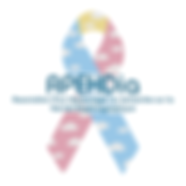For patients and families
This page contains information that may be of importance to patients with a rare inherited and congenital disease, of for parents that have a child with one of these conditions.

WHAT WE DO
Patient representatives
In 2015, the European Commission Expert Group on Rare Diseases published an Addendum to their 2013 ERN recommendations which formally recognised the value patient representatives can bring to the ERNs by being involved in their decision and opinion making structures. In 2016, EURORDIS and the European rare disease community established 24 European Patient Advocacy Groups (ePAGs) aligned to the clinical scope of each ERN.
The ERNICA European Patient Advocacy Group (ePAG) is comprised of Associated partner patient organisations and their ePAG advocates (/patient representatives). Patient organisations that meet the following requirements may apply and be invited by the ERN Coordinator in agreement with the ePAG lead, on behalf of the ePAG, to join ERNICA as Associate partners:
1. The organisation is legally registered and operates in Europe (48 countries as defined by EURORDIS based on definitions by the EU, the Council of Europe and the WHO-Europe), representing patients and families living with a rare disease that belong to the scope of ERNICA. This registration requirement can be waived in exceptional cases, due to the particularity of patient-driven organisations and of rare diseases, as well as for historical or contextual reasons.
2. Has a governing board made up of a majority patients or of family members of patients. This requirement can be waived in exceptional cases, due to the particularity of patient-driven organisations and of rare diseases, as well as for historical or contextual reasons.
3. Is financially independent, particularly from the pharmaceutical industry (max. 50% of funding from several companies).
4. Holds non-profit status.
5. Has proven activities such as patient support and/or advocacy activities and/or research.
As part of the application process, these patient organisations will formally endorse an ePAG advocate to be active in ERNICA working groups. They will represent the voice and interests of all patients that fall under the scope of the ERN, beyond their own disease. If the application is successful, ERNICA and the patient organisation will sign an Associate Partnership Collaboration Agreement.
Patient organisations/patient representatives interested in being involved in ERNICA can contact Sara Roman Galdran (project manager) for more information: s.romangaldran@erasmusmc.nl












